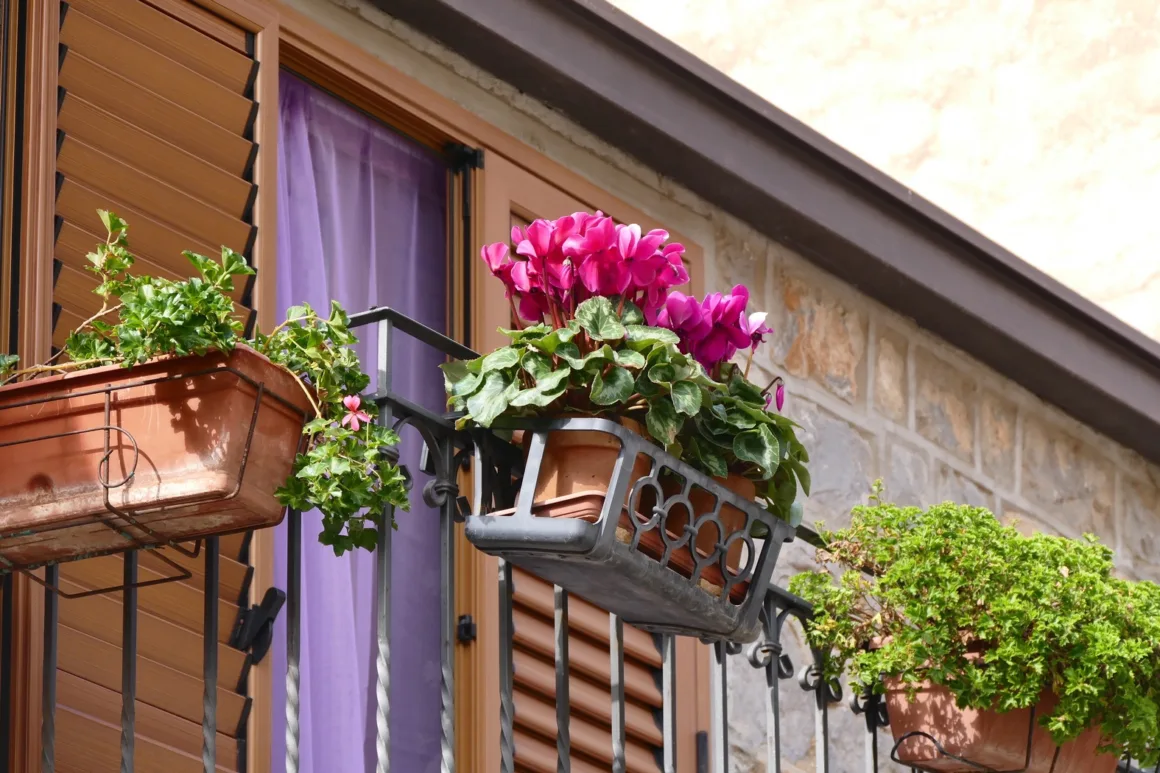Table of ContentsShow
Having a balcony garden can bring life and beauty to your outdoor space, even if you have limited room. One of the best ways to maximize the potential of your balcony is by creating a garden box. In this blog post, we will guide you through the process of creating a balcony garden box, as well as provide tips on how to maintain it and deal with common pests and diseases.
Creating a Balcony Garden Box
Before you start creating your balcony garden box, it is important to consider the size and weight capacity of your balcony. Make sure it can support the weight of the box, soil, and plants. Once you have determined the dimensions, you can follow these steps:
Step 1: Choosing the Right Box
The first step in creating your balcony garden box is selecting the right container. Look for a box that is made of weather-resistant material and has drainage holes at the bottom. It should also be large enough to accommodate the plants you want to grow.
Step 2: Preparing the Box
Before you start planting, it’s important to prepare your garden box. Start by filling it with a high-quality potting mix that is rich in nutrients. This will provide a good foundation for your plants to thrive.
Step 3: Selecting the Plants
Next, decide on the type of plants you want to grow in your balcony garden box. Consider the amount of sunlight your balcony receives and choose plants that are suitable for that level of light. Some popular options for balcony gardens include herbs, flowers, and small vegetables like cherry tomatoes or peppers.
Step 4: Arranging the Plants
Once you have selected your plants, it’s time to arrange them in your garden box. Place taller plants at the back and shorter ones towards the front to create a visually appealing arrangement. Make sure to leave enough space between the plants for them to grow.
Step 5: Watering and Maintenance
Proper watering is essential for the health of your balcony garden box. Check the moisture level of the soil regularly and water as needed. Be careful not to overwater, as this can lead to root rot. In addition to watering, regularly remove any dead leaves or flowers to keep your garden looking its best.
Step 6: Enjoying Your Balcony Garden
Once your balcony garden box is set up and well-maintained, it’s time to sit back and enjoy the fruits of your labor. Spend some time relaxing on your balcony, surrounded by the beauty of nature. You can also use your homegrown herbs and vegetables in your cooking, adding a fresh and flavorful touch to your meals.
Maintaining Your Balcony Garden Box
To ensure the longevity and beauty of your balcony garden box, regular maintenance is essential. Here are some tips to keep in mind:
- Pruning: Trim any dead or overgrown branches to encourage new growth and maintain the shape of your plants.
- Weeding: Remove any weeds that may sprout in your garden box to prevent them from competing for nutrients.
- Deadheading: Remove spent flowers to encourage the production of new blooms.
- Monitor for pests and diseases: Regularly inspect your plants for common pests such as aphids, spider mites, and whiteflies. If you notice any signs of disease, take action promptly to prevent further spread.
- Provide support: Install stakes or trellises for climbing plants to help them grow upwards and prevent them from sprawling.
- Rotate plants: Every few months, rotate your plants to ensure they receive equal sunlight and prevent overcrowding.
Also Read:
Common Pests and Diseases in Balcony Gardens
Despite your best efforts, balcony gardens can sometimes fall victim to pests and diseases. Here are some common ones to watch out for:
1. Aphids
Aphids are small, soft-bodied insects that can infest your plants, sucking the sap and causing stunted growth. They are often found on the undersides of leaves and can multiply quickly. To control aphids, you can try spraying a mixture of water and dish soap on the affected plants, or introduce natural predators like ladybugs or lacewings.
2. Whiteflies
Whiteflies are tiny, white insects that often cluster on the undersides of leaves, causing yellowing and wilting of the plants. They can be challenging to control, but you can try using sticky traps or applying insecticidal soap to reduce their numbers.
3. Fungal Diseases
Fungal diseases, such as powdery mildew and leaf spot, can be common in balcony gardens, especially in humid conditions. To prevent fungal diseases, make sure to provide good air circulation and avoid overwatering. If you notice signs of a fungal disease, remove and destroy the affected parts of the plant, and consider using a fungicide if necessary.
4. Spider Mites
Spider mites are tiny pests that can cause damage by sucking the sap from plants, leading to yellowing and wilting. They are often found on the undersides of leaves and can be controlled by regularly spraying the plants with water to increase humidity or using an insecticidal soap.
5. Slugs and Snails
Slugs and snails are common garden pests that can feed on the leaves and stems of your balcony plants, leaving behind holes and slime trails. To deter slugs and snails, you can try placing copper tape around your pots or using organic slug pellets.
By being aware of these common pests and diseases, you can take proactive measures to prevent and control them in your balcony garden. Regularly inspect your plants for any signs of infestation or disease, and take appropriate action to keep your balcony garden healthy and thriving.
Conclusion
Creating a balcony garden box is a rewarding and enjoyable project that allows you to bring the beauty of nature into your urban living space. By following these tips and guidelines, you can create and maintain a beautiful balcony garden box that will bring joy and serenity to your outdoor space. So why wait? Start your balcony gardening journey today and enjoy the many benefits it brings.








